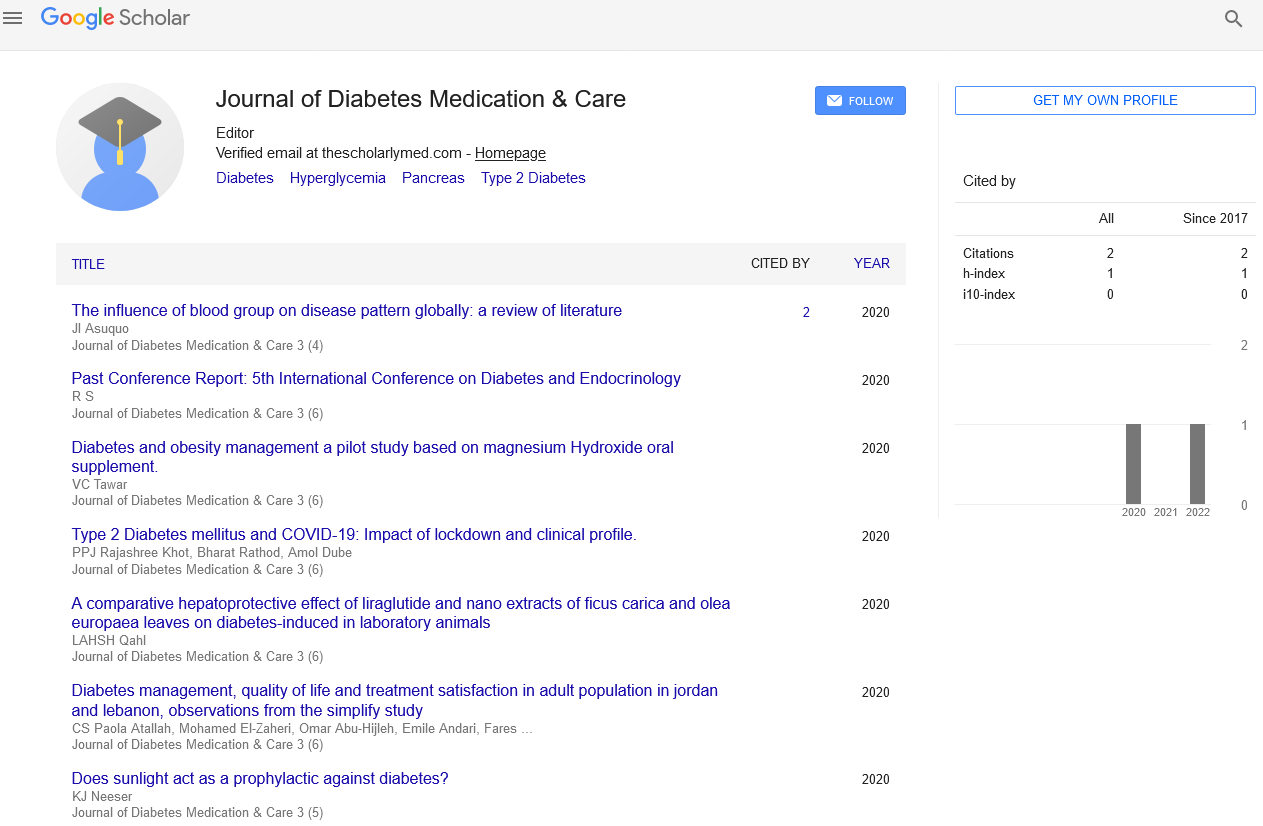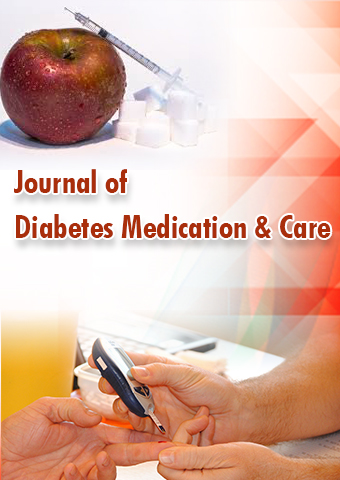Perspective - Journal of Diabetes Medication & Care (2024) Volume 7, Issue 5
Basal Insulin with Dosing Algorithms: Revolutionizing Diabetes Management
- Corresponding Author:
- Karl Manger
Department of Diabetology and Endocrinology, University in Mansoura, Mansoura, Egypt
E-mail: Karmanger@tufts.edu
Received: 05-Sep-2024, Manuscript No. JDMC-24-148351; Editor assigned: 09-Sep-2024, PreQC No. JDMC-24-148351 (PQ); Reviewed: 23-Sep-2024, QC No. JDMC-24-148351; Revised: 08-Oct-2024, Manuscript No. JDMC-24-148351 (R); Published: 15-Oct-2024, DOI: 10.37532/JDMC.2024.7(5).258-260
Introduction
Diabetes mellitus, particularly type 1 and type 2 diabetes, poses significant challenges in terms of blood glucose management. Insulin therapy remains a cornerstone of treatment, especially for patients requiring tight glycemic control. Among various insulin regimens, basal insulin plays a crucial role in maintaining stable blood glucose levels throughout the day and night. The integration of dosing algorithms into basal insulin therapy is an innovative approach that enhances the precision of treatment, making it more personalized and effective. This article explores the concept of basal insulin with dosing algorithms, its benefits, challenges, and future directions.
Description
Understanding basal insulin
Dried basal insulin is designed to provide a steady level of insulin to manage blood glucose levels between meals and overnight. Unlike prandial (mealtime) insulin, which is used to counteract rises in blood sugar after eating, basal insulin addresses the body’s baseline insulin needs. This type of insulin helps to suppress hepatic glucose production and facilitates glucose uptake by peripheral tissues, thereby preventing hyperglycemia.
Types of basal insulin
Basal insulin comes in several formulations, including:
Long acting insulin: These insulins, such as insulin glargine and insulin detemir, provide a consistent release of insulin over an extended period (up to 24 hours or more).
Ultra long acting insulin: Newer formulations, such as insulin degludec, offer an even longer duration of action, providing flexibility in dosing times and reducing the risk of nocturnal hypoglycemia.
The role of dosing algorithms
Dosing algorithms are structured guidelines that help healthcare providers determine the optimal insulin dose based on individual patient characteristics and blood glucose measurements. These algorithms take into account various factors, including:
• Current blood glucose levels
• Target glucose ranges
• Insulin sensitivity
• Patient lifestyle factors, such as diet and physical activity
• Mechanisms of dosing algorithms
Dosing algorithms can be classified into several categories:
Fixed dose algorithms: These algorithms involve preset doses that are adjusted based on periodic blood glucose measurements. Patients might start with a standard dose, which is then increased or decreased based on trends in their glucose readings.
Dynamic algorithms: These are more sophisticated and utilize real-time data to adjust insulin doses. They may incorporate Continuous Glucose Monitoring (CGM) data, allowing for immediate adjustments based on trends and patterns in blood glucose levels.
Adaptive algorithms: These algorithms use patient feedback and clinical data to modify insulin doses over time. They take into account variables such as weight changes, dietary habits, and physical activity levels.
Benefits of using dosing algorithms with basal insulin
Improved glycemic control: Dosing algorithms provide a systematic approach to insulin management, enabling more accurate dosing adjustments based on real-time glucose levels. This leads to improved glycemic control, reducing the risk of both hyperglycemia and hypoglycemia.
Personalization of therapy: Each patient with diabetes presents a unique set of challenges and responses to treatment. Dosing algorithms facilitate personalized insulin regimens tailored to individual needs, preferences, and lifestyles. This approach can improve patient satisfaction and adherence.
Enhanced safety: By using algorithms that rely on current blood glucose data, healthcare providers can minimize the risk of adverse events, such as hypoglycemia. Real time data helps in making timely adjustments, promoting safer insulin use.
Reduced healthcare costs: Better glycemic control can lead to fewer complications associated with diabetes, potentially reducing healthcare costs in the long run. By optimizing insulin dosing, algorithms can minimize hospitalizations and the need for additional medications to manage diabetes related issues.
Challenges and considerations
While the integration of dosing algorithms into basal insulin therapy offers significant advantages, several challenges remain:
Patient education and engagement: Patients must be adequately educated on how to use dosing algorithms effectively. This involves training on interpreting blood glucose readings, understanding how to adjust doses, and recognizing when to seek medical advice. Engagement in the management process is critical for the success of these algorithms.
Technology dependence: Many dosing algorithms, particularly dynamic and adaptive ones, rely on technology such as Continuous Glucose Monitors (CGMs) and smartphone applications. While these tools provide valuable data, they can also be a barrier for patients who are less tech-savvy or lack access to advanced devices.
Variability in insulin response: Individual responses to insulin can vary significantly based on factors such as genetics, lifestyle, and concurrent medications. This variability can complicate the implementation of dosing algorithms and may necessitate frequent adjustments and close monitoring.
Clinical integration: Healthcare providers must be trained to effectively use and interpret dosing algorithms in their clinical practice. Integrating these algorithms into routine care requires a shift in both training and workflow, which can be resource intensive.
Future directions
Advances in technology: The future of basal insulin dosing algorithms is closely tied to advancements in technology. The development of more sophisticated CGMs, along with Artificial Intelligence (AI) and machine learning, could lead to algorithms that adapt in real-time based on a wide array of patient data, including lifestyle factors and physiological responses.
Research and validation: Ongoing research is needed to validate the effectiveness and safety of various dosing algorithms across diverse populations. Clinical trials can help establish best practices for using these algorithms in different clinical settings and patient demographics.
Integrated care models: Future diabetes care models may incorporate multidisciplinary teams that include endocrinologists, diabetes educators, nutritionists, and technology experts. This collaborative approach can enhance the use of dosing algorithms and improve overall patient management.
Patient centric approaches: The incorporation of patient feedback into dosing algorithms can enhance their effectiveness. Future developments may focus on creating user friendly interfaces and decision support tools that empower patients to take an active role in their diabetes management.
Conclusion
Basal insulin therapy combined with dosing algorithms represents a significant advancement in the management of diabetes. By personalizing treatment, improving glycemic control, and enhancing safety, these algorithms have the potential to transform the lives of millions of people living with diabetes. While challenges remain, ongoing research, technological advancements, and a patient centered approach will pave the way for more effective and efficient diabetes management strategies. As the landscape of diabetes care continues to evolve, the integration of basal insulin with dosing algorithms will be a critical component of delivering high-quality care and improving patient outcomes.

